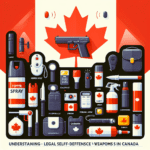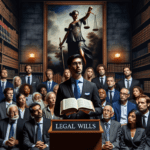Understanding legal paper size is more than just a matter of dimensions; it’s an essential aspect of various professional fields. When documents are formatted incorrectly, the impact can range from minor inconveniences to significant misunderstandings. Knowing the precise specifications and uses of legal paper can save time, improve communication, and enhance professionalism. In this article, we will explore the dimensions of legal paper size and its practical applications across different professions, ensuring you’re well-equipped to navigate this critical area.
The Basics of Legal Paper Size: Dimensions Explained
Legal paper size has defined dimensions that set it apart from other commonly used formats, such as letter and A4 paper. The standard legal paper size measures 8.5 inches by 14 inches (216 mm by 356 mm). This specific size was designed to accommodate legal documentation that often requires more space for signatures, seals, and additional text. The larger dimensions provide ample space for detailed clauses and long-form text, making it a staple in legal circles.
Many individuals and businesses may overlook the significance of using the correct paper size, leading to potential complications. For instance, when legal contracts or important documents are printed on standard letter-sized paper, critical information may be cut off or misaligned. This can create confusion or even legal disputes, which could have been avoided by simply adhering to the proper dimensions. Understanding these dimensions is crucial for anyone involved in legal matters or documentation.
In addition to the legal size, there are other document formats such as letter (8.5 x 11 inches) and A4 (8.27 x 11.69 inches) that are commonly used, but they serve different purposes. Legal paper is particularly prevalent in the legal system, where documents need to be easily recognizable and standardized. By grasping the differences in dimensions, professionals can ensure that they present their documents correctly and maintain the integrity of the information contained therein.
Practical Applications of Legal Paper in Various Professions
Legal paper’s dimensions serve several practical purposes across various industries, most notably in the legal sector itself. Law firms routinely utilize legal-sized documents for contracts, agreements, and court filings. The extra length allows for thorough documentation, which is essential in legal proceedings where every detail matters. Moreover, using the correct paper size can enhance the professionalism of a law firm, conveying a sense of credibility and attention to detail.
Beyond the legal field, other professions also benefit from the unique features of legal paper. For example, real estate professionals often use legal-sized documents for leases and contracts. The additional space allows for clear, comprehensive terms that are easily readable, minimizing the chances of misunderstandings. In fields like finance and accounting, legal paper is frequently employed for reports that require extensive data, where clarity and precision are imperative.
Educational institutions also find value in legal paper, particularly in administrative settings where extensive documentation is common. Faculty contracts, student agreements, and other important administrative documents are often drafted on legal-sized paper. This not only ensures that all information remains intact but also promotes a consistent format that can be easily recognized across various departments. By incorporating legal paper into their workflows, professionals can enhance their efficiency while ensuring that essential documents meet industry standards.
In summary, understanding legal paper size is essential for professionals across various fields. The unique dimensions of 8.5 inches by 14 inches offer practical advantages that enhance the clarity and professionalism of critical documents. Whether you’re in the legal sector, real estate, finance, or education, utilizing legal paper can significantly streamline your documentation processes. By following the insights shared in this article, you can elevate your professional practices and ensure that your documents live up to their highest potential. Embrace the importance of legal paper in your work today, and watch how it transforms your approach to documentation!
Understanding Legal Self-Defense Weapons in CanadaUnderstanding Legal Paper Size: Dimensions and Uses ExplainedNavigating Legal Name Changes in Ontario: A Comprehensive GuideRelevant LinkRelevant LinkRelevant Link



















